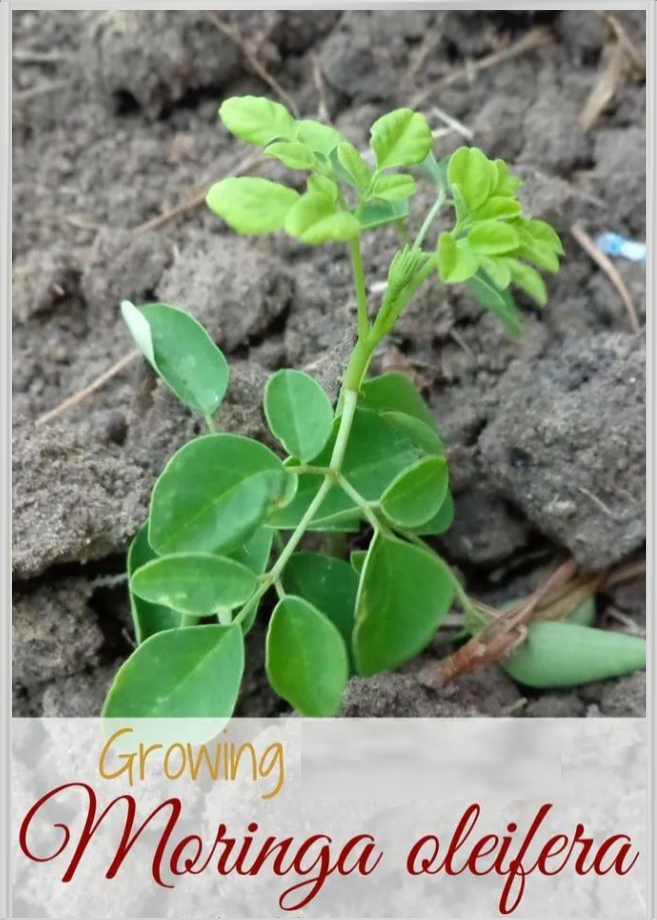The Moringa Oleifera, often hailed as the "Miracle Tree" for its nutrient-rich leaves and seeds, is a resilient and fast-growing plant that can be a rewarding addition to your home garden. Whether you're interested in its health benefits, sustainability, or simply the beauty of the tree itself, growing Moringa at home is more straightforward than you might think. This guide provides beginners with practical advice on how to cultivate, care for, harvest, and utilize Moringa, turning your green thumb into a source of nutrition and wellness.
Getting Started: Planting Your Moringa Tree
Choosing the Right Spot: Moringa trees thrive in sunny, warm conditions. Choose a spot in your garden that receives full sunlight for most of the day. Although Moringa can adapt to a variety of soil types, well-draining soil is ideal to prevent waterlogging and root rot.
Planting Seeds or Saplings: You can start your Moringa tree from seeds or purchase a young sapling from a nursery. If planting seeds:
- Soak them in water for 24 hours to enhance germination rates.
- Plant seeds about ¾ inch deep in the soil, spacing them about 2 feet apart if planting multiple trees.
- Water the soil lightly but consistently until germination, which typically occurs within 1-2 weeks.
Caring for Your Moringa Tree
Watering: Moringa trees are highly resilient and can withstand drought once established. However, during the initial growth phase, they require regular watering to encourage root development. It is recommended that you water them once or twice a week during this period. It's essential to allow the soil to dry out slightly between waterings to prevent root rot and promote robust root development. You can test the soil moisture level by sticking your finger into the soil; if it feels dry at a depth of one inch, it's time to water.
Fertilizing: Although Moringa trees can grow in poor soil, they benefit from occasional fertilization. Using a balanced and organic fertilizer can help your tree grow stronger and healthier. It is recommended that you apply fertilizer every three months. Overfeeding can damage the leaves and lead to leaf burn, so be careful not to use too much fertilizer.
Pruning: Regular pruning helps you maintain a manageable size, especially when growing Moringa in a small garden or pot. Pruning also promotes bushier growth, making it easier to harvest leaves. To prune your Moringa tree, use a clean and sharp pair of pruning shears to remove any dead or damaged branches. It's also recommended that you prune the tree back to its main stem to encourage new growth.
Harvesting Leaves and Seeds
Leaves: When it comes to harvesting Moringa leaves, it's important to wait until the tree is well-established and has plenty of foliage. Once that's the case, you can pick young, tender leaves from the tips of branches. These leaves are the most nutritious and flavorful, making them perfect for use in salads, soups, and stews. You can also dry the leaves for later use, either by hanging them upside down in a dark, dry place or by using a dehydrator.
Seeds: As for the Moringa seeds, they are ready for harvest when the pods dry and turn brown on the tree. Once that happens, you can crack open the pods to collect the seeds. These seeds are a great source of protein, fiber, and other essential nutrients. You can eat them fresh as a snack, or cook them in a variety of dishes, such as stir-fries, curries, and stews. Additionally, you can use the seeds for planting, either by planting them directly in the ground or by starting them in pots.
Using Moringa Leaves and Seeds
Moringa is a highly nutritious plant that has been used for centuries to promote a healthy body. Its leaves are a great source of vitamins A, B, and C, as well as minerals such as iron, calcium, and potassium. They also contain powerful antioxidants that help protect against free radicals and oxidative stress.
The leaves of the Moringa plant can be added to salads, soups, and smoothies, providing a delicious and nutritious boost to your diet. The seeds of Moringa can be eaten roasted, similar to nuts, or pressed to extract a healthy cooking oil.
Notably, Moringa is known to have several health benefits. It can help boost your immune function, reduce inflammation, and improve digestion. Additionally, Moringa has been found to have anti-cancer and anti-diabetic properties, making it a valuable addition to any diet.
Conclusion
Growing your own Moringa tree is a fulfilling way to bring nutrition and beauty to your home garden. With minimal care, you can harvest your own leaves and seeds, enjoying the "Miracle Tree's" benefits right from your backyard. As you nurture your Moringa tree, you'll not only cultivate a source of healthful ingredients but also contribute to a more sustainable and self-sufficient lifestyle.

